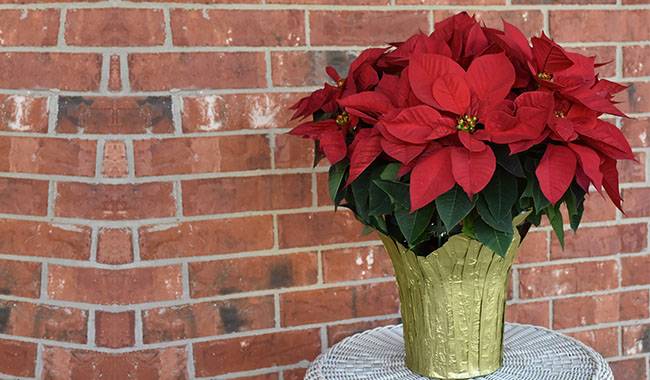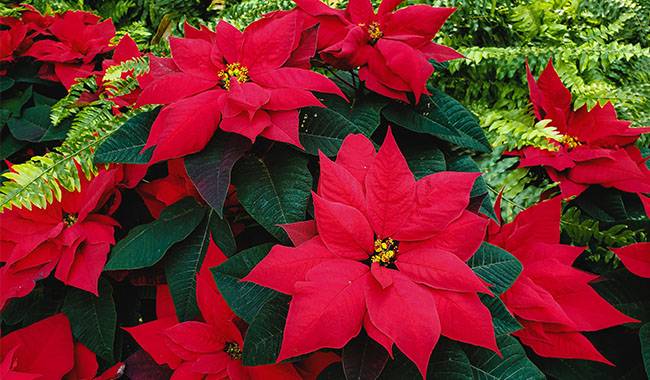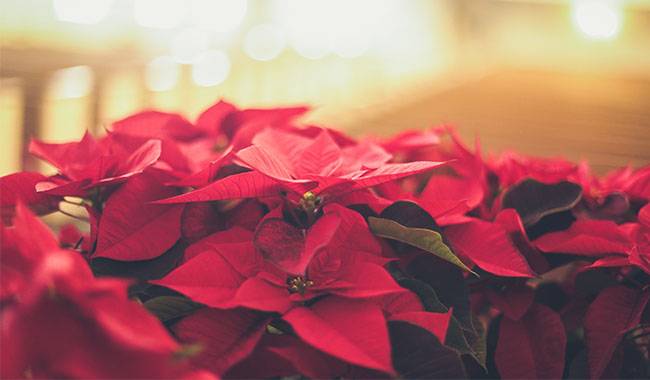
The incomparable Poinsettia are inseparable from Christmas traditions. Available shortly before the winter holidays, they bring New Year’s cheer to our homes and apartments. In general, they are not just seasonal plants, but “highly specialized”. However, it’s not a good idea to throw them away after all the Christmas bunting has been collected. While they may not last very long, they can be enjoyed for much longer than a few magical winter weeks. These shrubs bloom every winter, but they need the right care and attention after the holidays. You will learn How to Deal With Poinsettia After The Holiday in the ThumbGarden article.
CHARACTERISTICS OF POINSETTIA PLANTS
Poinsettia, rarely called by its botanical name Molochai splendid (Euphorbia pulcherrima), is a unique plant that blooms during the shortened daylight hours. It is no coincidence that it is known as an ideal winter species. the natural growth cycle of Poinsettia requires flowering at a time when most beautiful flowering plants enter a dormant stage.
But Poinsettia is not expected to flower. The tiny bead-like flowers, which grow in small inflorescences at the top of the shoots, are barely noticeable. Poinsettia has become a symbol of Christmas due to its bracts – the upper leaves, which are slightly smaller than the main leaves but are the same shape as the leaves at the top of the stem.
They change color as they bloom, changing hues completely to red, white, purple, pink, acrylic orange, or yellow, depending on the variety. poinsettia loses its dazzling foliage after 3 to 6 months of blooming.
Poinsettia is a perennial plant. If the right conditions are created for them, they can be maintained year after year. At the very least, these shrubs can be used for asexual reproduction and grow “replacements” after simple treatment. If the right approach is found for them, faithful plants will enjoy the same bright colors every December.
It is convenient to throw away Poinsettia as temporary decorations, as new plants fill the shelves massively every year. But don’t be in a rush to get rid of Poinsettia after the holidays. not only will they provide you with weeks of gorgeous, colorful foliage in the winter, but they will also provide you with lush greenery in the summer.
But even if you buy Poinsettia just as a living Christmas decoration, you should know that they are quite capricious. Affected by improper watering and low humidity, these houseplants require tropical conditions and special care.
In order to keep your plants beautiful, you need to know a few secrets and pay attention to the plants. But the results will be well worth the effort. Proper care during the flowering period and strict observation of the active and dormant growth periods are the main guarantees that Poinsettia will last into the next year.

AS LONG AS THE BRIGHTLY COLORED LEAVES ARE THERE, PLEASE PAY ATTENTION
Even if you do not intend to keep the plant, keep it as “alive” as possible, that is, do not throw it away with the Christmas tree. Until it loses its ornamental qualities, its bright bracts and wilts – in which case Poinsettia will no longer be attractive – keep it and admire its unique texture and color.
And to make the plant last as long as possible, make sure it receives ideal care to maintain its decorative qualities for as long as possible.
- Poinsettia does not like high temperatures. Maximum temperatures should ideally be limited to 77 °F (25 °C) (the colder the location, the longer the bright bracts will last). The ideal temperature is around 64 °F (18 °C).
- Plants need to be protected from extreme temperatures and drafts, even light ones. As with any cold surface, neither foliage nor pots should be in contact with them.
- Poinsettia prefers 12 hours of light and bright diffused light on an eastern, western, or partially southern windowsill with no direct sunlight.
- Air humidity must be high for Poinsettia. This plant cannot tolerate dry air and proximity to air conditioners or heaters. Misting is acceptable. But a tray of moist decorative material that fits the decor – such as stone chips, colored expanded clay, or glass beads – is more suitable.
- When watering Poinsettia, allow the soil to dry slightly at all times between full waterings of 1 inch (2.5 cm) at the top, but before the soil in the center of the pot dries out. Steady, light moisture content is ideal. Water Poinsettia with warm, soft water only and immediately drain the water from the tray.
- Fertilize Poinsettia to prolong its appearance, but do not over-fertilize: apply a compound fertilizer one month after purchase or when it begins to bloom. If Poinsettia continues to retain its bracts, apply a non-concentrated fertilizer every 4-6 weeks.
- For Poinsettia, dead leaves need to be removed regularly to keep the shrub tidy.
DORMANCY PERIOD OF POINSETTIA PLANTS
Once Poinsettia grows green above the bracts and starts to shed its brightly colored leaves (in most cases, some “normal” green leaves will also fall off), it needs quite different care and maintenance. Of course, you can just throw Poinsettia away at this time of year. But it’s not hard to keep it until the next year.
Simply cut the shrub to a stump of about 4-6 inches (10-15 cm) in height (leaving at least 3, preferably 5 buds on the shoots) and move it to a cool place with a temperature of 50 °F (10 °C) (but not below) to 59 °F (15 °C). Water the plants sparingly for 1.5 to 2 months and allow the substrate to dry completely in between.
ACTIVE GROWTH AND FLOWERING PREPARATION FOR A NEW CYCLE OF POINSETTIA

When Poinsettia begins to “wake up” (usually with a strikingly large number of new leaves on the plant at the same time), it should be transplanted into a nutrient-rich, loose, and light soil. A general-purpose substrate containing a loosener, thistle soil, or soil based on a polypodium mixture with a small amount of peat, sand, and perlite are all suitable. Plant Poinsettia in compact containers, increasing their size only slightly (in larger containers they can easily lose their compactness).
After transplanting the shrubs will be exposed to fresh air or a bright window to prevent drafts and water in the same way as during flowering. Fertilize every 2-3 weeks with a general-purpose or foliar fertilizer. Shape the shrubs during the early growth period, leaving 4-6 strong shoots from the new branches.
In September, Poinsettia was shaded with an artificial hood or screen for 14 hours to limit its sunlight hours. Flower buds will begin to form when sunlight hours are about 10 hours. Reduce watering by allowing the substrate to dry out by half. Replace fertilizer with ornamental plant species and increase the frequency of fertilization to once a week. after 2 months, resume standard care during the blooming period.
Lost Poinsettia or plants that do not want to be “played with” can be used for cuttings to grow new, young, and healthy plants. The top green cuttings, after washing off the milky sap with warm water and drying the cuttings, are rooted under a hood of the light substrate (or simply in water).







